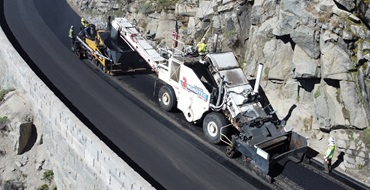Director's Message

Tony Tavares
Welcome to Mile Marker, Caltrans’ performance journal. In this quarterly publication we share details about a few of the many things we are doing to improve California’s vast and complex transportation system.
Two of the topics we explore in this issue are the state’s tackling of climate change through its embrace of zero-emission vehicles (ZEVs), and the cost savings we continue to accrue through our Caltrans Efficiencies Program.
California is at the forefront of policies that encourage the adoption of ZEVs, support the maturation of the industry, improve access, and ensure communities most impacted by vehicle pollution benefit.
As we all know, the economy relies on mobility, and the future of mobility is emission-free, whether e-bike, transit, bus or semi-truck. Fortunately, we are already seeing significant progress in California. The state has already achieved its passenger ZEV goal of 1.5 million sales nearly two years ahead of schedule.
California is leading the nation with commitments to 100 percent ZEV sales in the passenger vehicle market by 2035 and this spring adopted a policy for 100 percent ZEV truck sales by 2036. These ambitious policies are already generating results and will increase the model availability as we transition our own fleet to ZEVs.
While California is making significant strides in transitioning to a zero-emission future, we must not forget our department's goal to advance equity and livability in all communities. The benefits of zero-emission vehicles go beyond reducing emissions and improving air quality. Funding programs provide critical opportunities to redress and reduce harms in historically overburdened communities and tribal nations.
 Caltrans' 2022 Echo Summit project along U.S. Highway 50 near Lake Tahoe used an innovative design to accelerate the construction of the bridge. The accelerated schedule and unique design resulted
in a cost savings on some bid items.
Caltrans' 2022 Echo Summit project along U.S. Highway 50 near Lake Tahoe used an innovative design to accelerate the construction of the bridge. The accelerated schedule and unique design resulted
in a cost savings on some bid items.Caltrans drone photograph
Meanwhile, the Efficiencies Program requires Caltrans to achieve at least $100 million in efficiencies each year, as legislated by Senate Bill 1 (SB 1). As noted in the Caltrans Strategic Plan, stewardship and efficiency are key components to realize success as a department and achieve our goals.
There is reason to be proud of, and encouraged by, the dedication and hard work put forth by Caltrans employees. Caltrans set new record highs in Fiscal Year (FY) 2021-22 for the number of new efficiencies (14) and total number of efficiencies (38). I’m extremely proud of our success in this arena and propose we all continue to rise and meet this challenge.
The efficiencies story in this issue spotlights the work of Allen Cripe, lead heavy equipment body worker/painter in the Division of Equipment (DOE). The DOE oversees our fleet equipment, which is composed of more than 12,000 pieces and is tended to by more than 700 employees.
Read how Allen used inspiration, determination, creativity and collaboration to streamline the amount of time, effort and cost to sand and grind the steel parts that work their way through the DOE’s production line. His efforts led to the introduction of “Slingshot Suzie” in Headquarters’ production yard. Suzie’s life expectancy is 40 years, and she is expected to reduce costs by more $50,000 annually through 2056.
With our commitment to a greener future and increased efficiencies, joined as always by our focus on safety and equity, Caltrans continues to do what it can to best serve the people of California and all those who rely on our transportation system.

